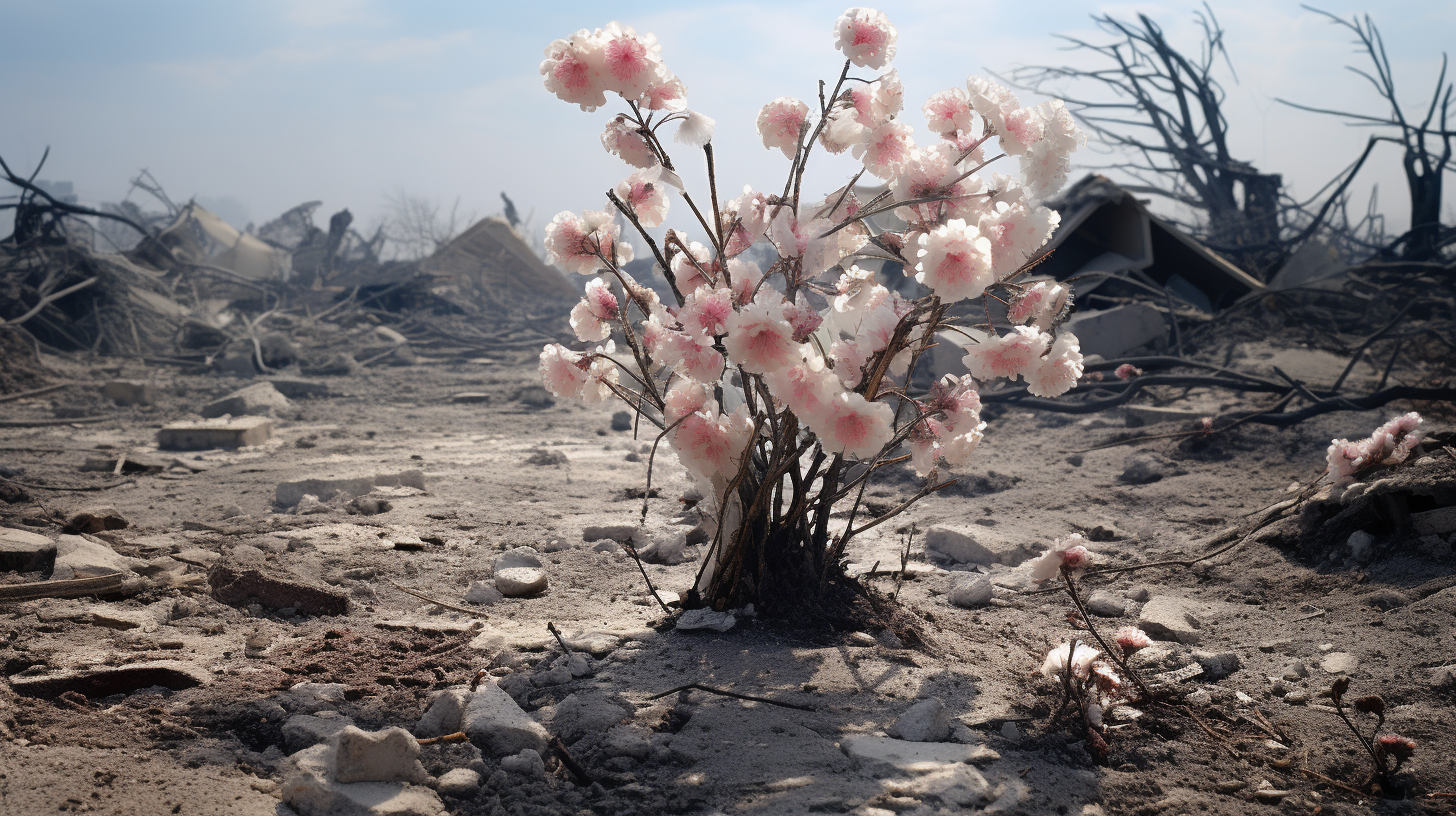In a world awash with cascading ecological cataclysms, one of the most poetic tragedies unfolds silently—the death of flowers. Our landscape, once a kaleidoscope of vibrant hues and fragrances, has been reduced to shades of gray. The increasingly barren earth under our feet whispers of an age where blossoms were more than a fabled myth. ‘The Barren Blossom: When Flowers No Longer Bloom’ paints a chilling portrait of a land where the spring has been eternally silenced.
The absence of floral blooms not only extinguishes the visual banquet our ancestors once enjoyed but also disrupts the intricate dance of ecosystems. Without flowers, there are no bees buzzing, no butterflies flitting, and no seeds for birds to spread. A silent spring foreboding the collapse of food webs is already upon us. Pollination, once a service freely rendered by nature’s winged creatures, has now turned into a haunting memory as many pollinators find themselves without sustenance or purpose.
Researchers have been sounding alarms for decades but to no avail. Our relentless exploitation of natural resources and contempt for environmental regulations have accelerated our march towards this sterile future. The synergy of climate change, rampant pollution, and habitat destruction has effectively snuffed out the existence of flora, turning once-teeming gardens into barren plots. Environmentalists lament, ‘We’ve ignored the canaries in the coal mine; the flowers were our final warning.’
The socio-economic repercussions are profound. Agriculture, reliant on pollination, suffers monumental losses as crop yields dwindle. Our menus are now devoid of the variety once celebrated, with grains that self-pollinate becoming the staple, a sure harbinger of exacerbated food inequality. The pharmaceutical industry reels from the absence of natural ingredients critical for countless medicines, reminding us just how deeply interwoven our lives are with the botanical world.
But perhaps the most poignant aspect of our crumbling environment lies in the cultural and psychological. Flowers are symbols of life, love, and joy across cultures—a universal language of beauty and renewal. To lose them is to watch a part of our collective soul wither. The devastation of spiritual and mental health, although less quantifiable than economic impacts, cuts with a keener edge.
Adaptations to an existence without flowers are varied and harrowing. From synthetic pollination to artificial gardens, humanity tries to mimic what once occurred as naturally as the rise and fall of the sun. And yet, plastic and metal can never capture the essence of a cherry blossom swaying in a soft spring breeze.
It may seem as though the story ends here, in a hopeless tableau of despair. But the truth is, ‘The Barren Blossom’ should not serve as the closing chapter of humanity’s interaction with nature but as a morbid parable urging us to recalibrate our relationship with the living planet. The hope might not lie in reclaiming the lost paradise but in understanding the magnitude of our folly and striving to prevent further desecration of the earth’s remaining treasures.
Our future, grim as it may appear, is not set in stone. Transformative action can alter the course, but only if taken with the gravity the situation demands. Otherwise, the legend of flowers—nature’s most delicate artists—will remain just that, a legend, recounted with remorse by a civilization too paralyzed by apathy to act when action was possible.
As with all dystopian narratives, the true purpose is to ignite the spark of change before the imagined becomes the inevitable. For now, we inhabit a world where ‘The Barren Blossom’ is not just a title but a reality. It’s a call to preserve the remaining vestiges of our planet’s beauty and to remember that each extinct bloom heralds the disappearance of a vital thread in the tapestry of life.
